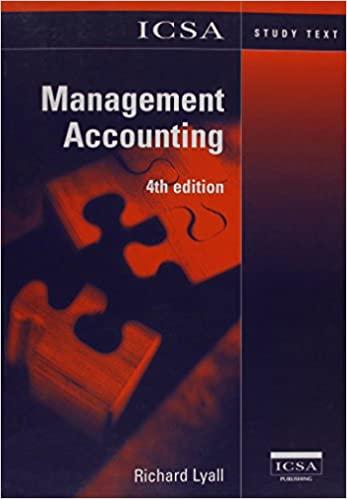Question
11. Zu Ting is a senior auditor leading the audit of Dietanic Ltd, a company that specializes in manufacturing car parts. In selecting samples to
11.
Zu Ting is a senior auditor leading the audit of Dietanic Ltd, a company that specializes in manufacturing car parts. In selecting samples to perform the audit tests, Zu is aware of the risk of concluding that controls are more effective than they actually are as a result of sampling. Zu is primarily concerned with this type of erroneous conclusion because:
a.
This type of erroneous conclusion is more likely to lead to an inappropriate audit opinion
b.
This type of erroneous conclusion is more likely to lead to additional work to establish that initial conclusions were incorrect
c.
This type of erroneous conclusion is likely to result in more substantive procedures required to be performed
d.
All three statements are reasons why Zu would be concerned with this type of erroneous conclusion
12.
At the completion of the audit of Squeez Meat Ltd, Mara Valez, the leading auditor concluded that the audit opinion would include an emphasis of matter paragraph relating to the going concern problem Squeez Meat is facing. Management questioned what the emphasis of matter paragraph means:
a.
The going concern issue is fundamental to the users understanding of the financial report and must be highlighted for their information
b.
The auditor is unable to obtain sufficient appropriate evidence to confirm the going concern issues
c.
The going concern issue is a material but not pervasive hence must be emphasized in the report
d.
The going concern issue is material and pervasive hence must be emphasized in the report
13.
Zu Ting, a senior auditor working for XYZ Accountants was chosen to lead the audit of Dietanic Ltd, a company that specializes in manufacturing car parts. To test the assertions that accounts receivables exist and are complete, Zu would perform which of the following tests of details of balances procedure?
a.
Vouching a sample of the individual debits and credits in customer accounts for the transaction classes indicated to the entries in journals and supporting documents
b.
Determine that the closing balances in the individual customer accounts add up to the control account balance
c.
Confirm the balances for a sample of customer accounts with the bank
d.
Trace transaction from remittance advice and the cash receipts journal to the corresponding entries in the customer accounts
14.
When the auditor concludes that controls are more effective than they actually are, this is referred to as which type of risk?
a.
Risk of under-reliance
b.
Risk of incorrect rejection
c.
Risk of overreliance
d.
Risk of incorrect acceptance
16.
During the audit of Sticky Treats, Jay Klaus one of the audit team members was asked to gather evidence to test the assertion that property, plant and equipment bought during the financial year exist. Identify which of the following sources of evidence Jay should consider to be the most reliable and relevant.
a.
Confirmation of the cost of property plant and equipment with the suppliers
b.
Vouch transactions from the fixed assets ledger account against the payment voucher and invoice
c.
Physical sighting of property plant and equipment
d.
Inquiry of the procurement officer and review of purchase order and receiving dockets
Step by Step Solution
There are 3 Steps involved in it
Step: 1

Get Instant Access to Expert-Tailored Solutions
See step-by-step solutions with expert insights and AI powered tools for academic success
Step: 2

Step: 3

Ace Your Homework with AI
Get the answers you need in no time with our AI-driven, step-by-step assistance
Get Started


